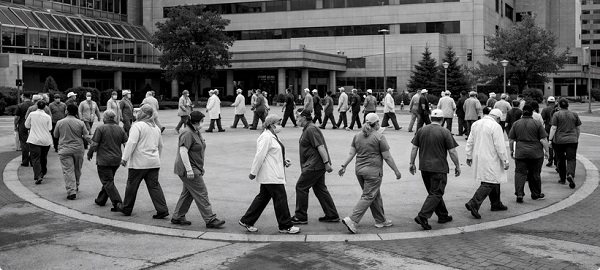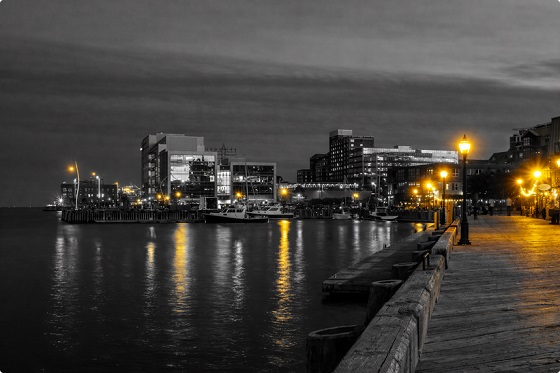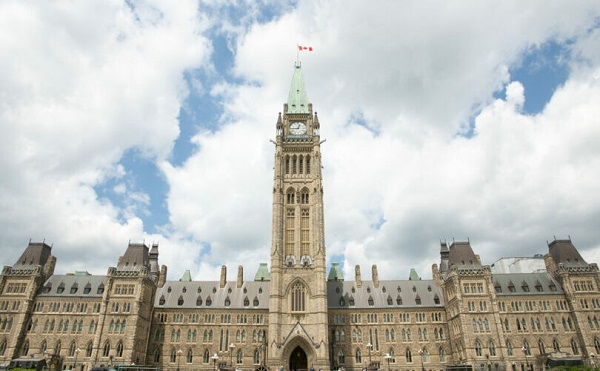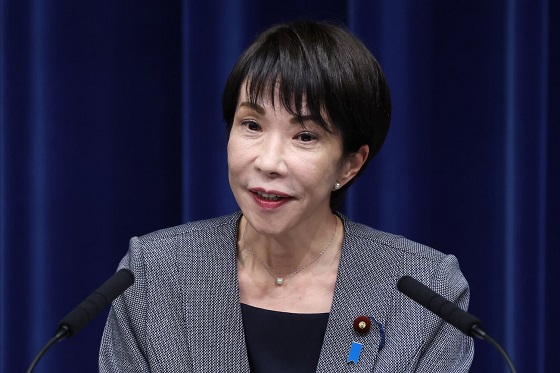Frontier Centre for Public Policy
Wokeism VS. classical liberal truth-based order at the root of Online Harms bill debate

From the Frontier Centre for Public Policy
By Brian Giesbrecht, retired judge
You can be made a criminal as a result of someone’s emotional response to what you say or write online. A successful complainant can receive up to $20,000 for that anonymous complaint from the person complained about.
Wokeism versus the classical liberal truth-based order is what the discussion on the Online Harms Bill, C-63, is really about. Although some see it as a plot to undermine free speech, it may actually represent the legitimate view of progressives—wokeism—to promote social justice, as they see it. Prime Minister Justin Trudeau and his ministers—the first woke government in the history of Canada—sincerely believe in what they are doing. C-63 is wokeism at work.
I’m not talking about the sections designed to protect children from online harm. Everyone wants that. Whether or not the various digital safety commissars are necessary is questionable, but the politicians can sort that out. I’m referring specifically to the sections allowing anyone to anonymously make a complaint to the Canadian Human Rights Commission (CHRC) that someone has written or said something that is “hateful.” This is defined as causing someone to feel “detested” or “vilified.” You can be made a criminal as a result of someone’s emotional response to what you say or write online. A successful complainant can receive up to $20,000 for that anonymous complaint from the person complained about. And that person, who is now $20,000 poorer, can be ordered to pay a further $50,000 to the government after CHRC bureaucrats—appointed by the government—decide that he has hurt the feelings of the anonymous complainant.
We don’t have to imagine how this will work, because we have already seen it in action with Section 13, the previous incarnation of C-63. In one famous case, Ezra Levant, now of Rebel News, was the person complained about. He had dared to republish the infamous Danish cartoons of Mohammed. Someone complained, and Levant basically had years of his life, and most of his money, consumed with trying to defend himself.
The other famous Section 13 case related to the Islamist issue involved author and media personality Mark Steyn. His case was just as gruelling, time consuming, and expensive. Steyn eventually won, but at great cost in time and money.
Largely as a result of these cases, Section 13 was repealed by the Harper government. What had happened is that a commission with a particular view about Islamic issues had relentlessly prosecuted two men who legitimately held different views about the subject.
And that is exactly what we can expect with this resurrected version of Section 13.
It could be on Islamic issues where people have different views. Or it could be on a thousand other issues where people have different views.
The trans issue is one. The prime minister famously tweeted “Trans women are women.” That is a view held by many people. It is one of the fundamental tenets of progressivism—wokeism. However, many do not accept that view. How many? According to Professor Eric Kaufman, one-third of Canadians accept woke views, while two-thirds reject wokeism. This same two-thirds to one-third ratio also applies in Britain and United States. The one-third fervently believe that they must remake the world according to the way they know it must be, and that the two-thirds who don’t see it yet must be brought along.
So, with this proposed legislation, we see the problem immediately. Complaints will be made to the CMHR about a trans issue, for example, against someone within the two-thirds majority of the population who do not accept that “trans women are women” and that complaint will be adjudicated by mainly Liberal appointees—appointed in large part exactly because of their progressive views—who believe that “trans women are women.” The people complained about can expect to be treated the same way Levant and Steyn were treated: namely, being forced through lengthy and expensive hearings, simply for holding the same views that two-thirds of Canadians hold.
This is an absurd result. And the trans example is just one of many that can be expected to generate complainants. What about the belief that all indigenous complaints must be believed? This is the woke view, namely that the truthfulness of stories told within indigenous communities cannot be questioned in the usual way. The most dramatic example of this odd belief is the claim that 215 indigenous children were secretly buried at the former Kamloops Residential School, in some cases with the forced help of children as young as six. We were asked to believe this highly improbable claim simply because of stories that circulated within indigenous communities.
The Trudeau Liberals immediately accepted this baseless claim. A cabinet minister, Marc Miller, even publicly called a distinguished professor of history, Jacques Rouillard a “ghoul” for simply suggesting that it is in the interest of all Canadians that excavations should be undertaken at Kamloops to determine the truth. If a cabinet minister says such things, it can safely assumed that many other people are quite willing to lodge anonymous complaints against truth seekers, like this professor.
The prime minister actually gave an explanation of how he views free speech in a candid discussion with a journalist during the truckers’ convoy protest. He said that some Canadians—those opposing vaccine mandates and other forms of excessive government control—had “unacceptable views.” They must be stopped. Only “acceptable views”—his—would be allowed.
The problem with this simplistic view is that there are a myriad of subjects upon which people hold different views. Trudeau sincerely believed that these protesters were wrong, while the protestors just as sincerely believed that he was wrong. Imposing the Emergencies Act over a difference of opinion was an extreme move. We now know that what he did was unconstitutional. Bill C-63 is very similar to the use of the Emergencies Act. Both only make sense to the woke.
The classical liberal truth-based order, so painstakingly constructed, was built on free and raucous discussion. And that is the only way it can be maintained. That free discussion of ideas—no matter how offensive, “hateful,” or irksome they might be to people with different views—is vital to our democratic governance.
The woke view, on the other hand, insists that there are certain fixed ideas, such as systemic racism, trans women are women, etc., that must be accepted by everyone, at any cost.
That’s the fight that is underway now with the Online Harms Bill. One side—the one-third—say that they know the way, and everyone must follow. The other side—the two-thirds—say that no one “knows” the way, but only by free discussion can we find it. That free discussion of ideas is messy. People will have their feelings hurt by discussions that will not always be polite. But that’s exactly what has built our advanced civilization.
Wokeism versus classical liberal truth-based order. That’s what C-63 is about.
Children must be protected. Genocide is bad. No one argues with those things. But free speech must be protected. The one-third of the population who hold “woke” views are absolutely entitled to hold and express those views. But they cannot be allowed to prevent the two-thirds who view the world differently from expressing theirs.
Canadians are a trusting people, as Kaufman points out in the above article. And while the roughly two-thirds of the population that does not accept wokeism is identical to the two-thirds in Britain and United States, Canada is different from them in that our Conservative Party has been very reluctant to push back against wokeism, as the Conservatives do in Britain and the Republicans so vigorously do in America. The odd result is that the two-thirds non-woke Canadians tend to trust the one-third woke who have captured the media and our other major institutions. We saw that at work in the government control wielded during the COVID years. Bill C-63 can only make that tendency towards submission worse, by allowing only woke views—acceptable views—to be discussed publicly.
There will be some brave free-speech martyrs, like Levant and Steyn, who will be prepared to soldier on regardless of what legislation the current ideological government passes. But most people who would be inclined to push back against woke mantras—such as “a trans woman is a woman” or “all indigenous claims must be believed”—won’t, even if they know that the claims aren’t true. Canada will become the worse for it.
Wokeism is authoritarian, and will not tolerate free speech.
As drafted, Bill C-63 definitely contravenes Article 2 of the United Nations Declaration of Human Rights, which states that everyone has the right to their “political or other opinion.”
C-63, as drafted, is bad law. It must not be passed.
Brian Giesbrecht, retired judge, is a Senior Fellow at the Frontier Centre for Public Policy
Business
The Real Reason Canada’s Health Care System Is Failing

From the Frontier Centre for Public Policy
By Conrad Eder
Conrad Eder supports universal health care, but not Canada’s broken version. Despite massive spending, Canadians face brutal wait times. He argues it’s time to allow private options, as other countries do, without abandoning universality.
It’s not about money. It’s about the rules shaping how Canada’s health care system works
Canada’s health care system isn’t failing because it lacks funding or public support. It’s failing because governments have tied it to restrictive rules that block private medical options used in other developed countries to deliver timely care.
Canada spends close to $400 billion a year on health care, placing it among the highest-spending countries in the Organization for Economic Co-operation and Development (OECD). Yet the system continues to struggle with some of the longest waits for care, the fewest doctors per capita and among the lowest numbers of hospital beds in the OECD. This is despite decades of spending increases, including growth of 4.5 per cent in 2023 and 5.7 per cent in 2024, according to estimates from the Canadian Institute for Health Information.
Canadians are losing confidence that government spending is the solution. In fact, many don’t even think it’s making a difference.
And who could blame them? Median health care wait times reached 30 weeks in 2024, up from 27.7 weeks in 2023, which was up from 27.4 weeks in 2022, according to annual surveys by the Fraser Institute.
Nevertheless, politicians continue to tout our universal health care system as a source of national pride and, according to national surveys, 74 per cent of Canadians agree. Yet only 56 per cent are satisfied with it. This gap reveals that while Canadians value universal health care in principle, they are frustrated with it in practice.
But it isn’t universal health care that’s the problem; it’s Canada’s uniquely restrictive version of it. In most provinces, laws restrict physicians from working simultaneously in public and private systems and prohibit private insurance for medically necessary services covered by medicare, constraints that do not exist in most other universal health care systems.
The United Kingdom, France, Germany and the Netherlands all maintain universal health care systems. Like Canada, they guarantee comprehensive insurance coverage for essential health care services. Yet they achieve better access to care than Canada, with patients seeing doctors sooner and benefiting from shorter surgical wait times.
In Germany, there are both public and private hospitals. In France, universal insurance covers procedures whether patients receive them in public hospitals or private clinics. In the Netherlands, all health insurance is private, with companies competing for customers while coverage remains guaranteed. In the United Kingdom, doctors working in public hospitals are allowed to maintain private practices.
All of these countries preserved their commitment to universal health care while allowing private alternatives to expand choice, absorb demand and deliver better access to care for everyone.
Only 26 per cent of Canadians can get same-day or next-day appointments with their family doctor, compared to 54 per cent of Dutch and 47 per cent of English patients. When specialist care is needed, 61 per cent of Canadians wait more than a month, compared to 25 per cent of Germans. For elective surgery, 90 per cent of French patients undergo procedures within four months, compared to 62 per cent of Canadians.
If other nations can deliver timely access to care while preserving universal coverage, so can Canada. Two changes, inspired by our peers, would preserve universal coverage and improve access for all.
First, allow physicians to provide services to patients in both public and private settings. This flexibility incentivizes doctors to maximize the time they spend providing patient care, expanding service capacity and reducing wait times for all patients. Those in the public system benefit from increased physician availability, as private options absorb demand that would otherwise strain public resources.
Second, permit private insurance for medically necessary services. This would allow Canadians to obtain coverage for private medical services, giving patients an affordable way to access health care options that best suit their needs. Private insurance would enable Canadians to customize their health coverage, empowering patients and supporting a more responsive health care system.
These proposals may seem radical to Canadians. They are not. They are standard practice everywhere else. And across the OECD, they coexist with universal health care. They can do the same in Canada.
Alberta has taken an important first step by allowing some physicians to work simultaneously in public and private settings through its new dual-practice model. More Canadian provinces should follow Alberta’s lead and go one step further by removing legislative barriers that prohibit private health insurance for medically necessary services. Private insurance is the natural complement to dual practice, transforming private health care from an exclusive luxury into a viable option for Canadian families.
Canadians take pride in their health care system. That pride should inspire reform, not prevent it. Canada’s health care crisis is real. It’s a crisis of self-imposed constraints preventing our universal system from functioning at the level Canadians deserve.
Policymakers can, and should, preserve universal health care in this country. But maintaining it will require a willingness to learn from those who have built systems that deliver universality and timely access to care, something Canada’s current system does not.
Conrad Eder is a policy analyst at the Frontier Centre for Public Policy.
Business
Ottawa Is Still Dodging The China Interference Threat

From the Frontier Centre for Public Policy
By Lee Harding
Alarming claims out of P.E.I. point to deep foreign interference, and the federal government keeps stalling. Why?
Explosive new allegations of Chinese interference in Prince Edward Island show Canada’s institutions may already be compromised and Ottawa has been slow to respond.
The revelations came out in August in a book entitled “Canada Under Siege: How PEI Became a Forward Operating Base for the Chinese Communist Party.” It was co-authored by former national director of the RCMP’s proceeds of crime program Garry Clement, who conducted an investigation with CSIS intelligence officer Michel Juneau-Katsuya.
In a press conference in Ottawa on Oct. 8, Clement referred to millions of dollars in cash transactions, suspicious land transfers and a network of corporations that resembled organized crime structures. Taken together, these details point to a vulnerability in Canada’s immigration and financial systems that appears far deeper than most Canadians have been told.
P.E.I.’s Provincial Nominee Program allows provinces to recommend immigrants for permanent residence based on local economic needs. It seems the program was exploited by wealthy applicants linked to Beijing to gain permanent residence in exchange for investments that often never materialized. It was all part of “money laundering, corruption, and elite capture at the highest levels.”
Hundreds of thousands of dollars came in crisp hundred-dollar bills on given weekends, amounting to millions over time. A monastery called Blessed Wisdom had set up a network of “corporations, land transfers, land flips, and citizens being paid under the table, cash for residences and property,” as was often done by organized crime.
Clement even called the Chinese government “the largest transnational organized crime group in the history of the world.” If true, the allegation raises an obvious question: how much of this activity has gone unnoticed or unchallenged by Canadian authorities, and why?
Dean Baxendale, CEO of the China Democracy Fund and Optimum Publishing International, published the book after five years of investigations.
“We followed the money, we followed the networks, and we followed the silence,” Baxendale said. “What we found were clear signs of elite capture, failed oversight and infiltration of Canadian institutions and political parties at the municipal, provincial and federal levels by actors aligned with the Chinese Communist Party’s United Front Work Department, the Ministry of State Security. In some cases, political donations have come from members of organized crime groups in our country and have certainly influenced political decision making over the years.”
For readers unfamiliar with them, the United Front Work Department is a Chinese Communist Party organization responsible for influence operations abroad, while the Ministry of State Security is China’s main civilian intelligence agency. Their involvement underscores the gravity of the allegations.
It is a troubling picture. Perhaps the reason Canada seems less and less like a democracy is that it has been compromised by foreign actors. And that same compromise appears to be hindering concrete actions in response.
One example Baxendale highlighted involved a PEI hotel. “We explore how a PEI hotel housed over 500 Chinese nationals, all allegedly trying to reclaim their $25,000 residency deposits, but who used a single hotel as their home address. The owner was charged by the CBSA, only to have the trial shut down by the federal government itself,” he said. The case became a key test of whether Canadian authorities were willing to pursue foreign interference through the courts.
The press conference came 476 days after Bill C-70 was passed to address foreign interference. The bill included the creation of Canada’s first foreign agent registry. Former MP Kevin Vuong rightly asked why the registry had not been authorized by cabinet. The delay raises doubts about Ottawa’s willingness to confront the problem directly.
“Why? What’s the reason for the delay?” Vuong asked.
Macdonald-Laurier Institute foreign policy director Christopher Coates called the revelations “beyond concerning” and warned, “The failures to adequately address our national security challenges threaten Canada’s relations with allies, impacting economic security and national prosperity.”
Former solicitor general of Canada and Prince Edward Island MP Wayne Easter called for a national inquiry into Beijing’s interference operations.
“There’s only one real way to get to the bottom of what is happening, and that would be a federal public inquiry,” Easter said. “We need a federal public inquiry that can subpoena witnesses, can trace bank accounts, can bring in people internationally, to get to the bottom of this issue.”
Baxendale called for “transparency, national scrutiny, and most of all for Canadians to wake up to the subtle siege under way.” This includes implementing a foreign influence transparency commissioner and a federal registry of beneficial owners.
If corruption runs as deeply as alleged, who will have the political will to properly respond? It will take more whistleblowers, changes in government and an insistent public to bring accountability. Without sustained pressure, the system that allowed these failures may also prevent their correction.
Lee Harding is a research fellow for the Frontier Centre for Public Policy.
-

 International1 day ago
International1 day agoTrump confirms first American land strike against Venezuelan narco networks
-

 Business1 day ago
Business1 day agoHow convenient: Minnesota day care reports break-in, records gone
-

 Opinion2 days ago
Opinion2 days agoGlobally, 2025 had one of the lowest annual death rates from extreme weather in history
-

 Business1 day ago
Business1 day agoThe great policy challenge for governments in Canada in 2026
-

 Bruce Dowbiggin4 hours ago
Bruce Dowbiggin4 hours agoThe Rise Of The System Engineer: Has Canada Got A Prayer in 2026?
-

 International4 hours ago
International4 hours agoMaduro says he’s “ready” to talk
-

 International4 hours ago
International4 hours agoLOCKED AND LOADED: Trump threatens U.S. response if Iran slaughters protesters



